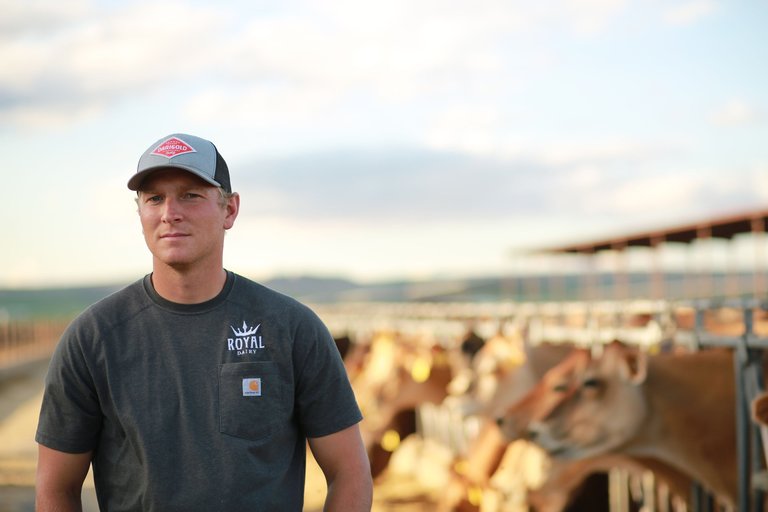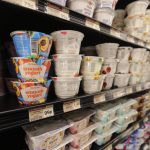
I and other dairy farmers face lawsuits, public criticism, online bullying, ever more regulations, activist generated “undercover” videos, claims we abuse our employees and animals, and abusive enforcement by government agencies. Surveys show that the trust farmers have always enjoyed is being eroded.
My grandpa was a crop farmer with some beef cows. He milked a few cows but on a very small scale. My dad is a crop farmer. Most don’t realize how these different farm types work together. Organic fertilizer — cow manure — helps keep our organic farms growing. Crop rotation and pasture land make farming work together.
Farming, I discovered, is an 18-hour-a-day, 365-day-a-year business. I sure found it wasn’t about the money. Today, national statistics show the average farmer takes in about $60,000 per year. Very few farmers I know could afford to raise a family in Seattle or any other major city with the “profits” they earn on their “factory farm.”
I’m not a “factory farmer,” I’m a family dairy farmer. We sell our milk through a dairy cooperative and like all but a few who process their own milk, our milk is sold on the global market. We don’t control the price we get. The price today is not much more — given inflation — than my grandfather got for his milk about 40 years ago. While the price of milk has not increased much, our costs have gone way, way up. Labor costs have about quadrupled in that 40 years. Total farm costs, including labor, feed, land costs and other items needed to farm, have increased many times over. Important items such as health insurance and medical costs for employees and my family have increased much more.
Imagine if you made cars, widgets or software. The price you get for what you make stays about the same, but your costs to make them go up and up and up. Your banker doesn’t like seeing big losses, and when you are already working impossible hours you can’t fix the problem by working more. Something has to give. There are only two real answers: increase productivity or go out of business. America’s farmers have done both.
Today, we have less than one third the number of farms than in the 1940s. The mid-size farm that used to dominate is getting rare. There are large professional farms, and a growing number of small farms that are not large enough to provide a family income. These are hobby or part-time farms. The large professional farms are almost all family farms. Some 97% of America’s farms are owned and managed by families, most often families that have run the farm for several generations and whose current owners, like me, want nothing more than to pass our farm to our children.
My grandfather and father faced many of the same choices that I do today. To stay in business I have to become more productive. Crop farmers have to add more land and equipment. As a dairy farmer it means I need more cows and my cows have to produce more. I have to use the best and latest technology I can possibly afford, and my costs have to be kept to a minimum. Only farms that do that can stay in business, which is why the surviving farms are usually run by some pretty smart, hardworking business owners. The productivity of American dairy cows is truly amazing. They produce nine times more milk per cow than the dairy cows in India. That means our cows produce nine times less greenhouse gas per gallon of milk than cows in India. We also use 60% less water to produce the milk products you enjoy, and as of 2007 we had 63% less carbon footprint per gallon produced than in 1944. Cows and calves are cared for with a new level of professionalism combined with a love for the animals that characterizes all but a few dairy farmers.
I’m a professional dairy farmer, and if you enjoy ice cream, real cream in your imported coffee, cheese on your pizza and yogurt in the morning, you may be glad that I am. You are enjoying food that is far safer, far less expensive and far more environmentally sustainable than your parents or grandparents ever had. The price of milk has increased far below inflation rates and most of the increase has gone into selling and distributing milk products rather than to the farmer.
When you hear the few but loud activists claim me and my fellow dairy farmers run “factories,” think about it. To those few, anyone owning more than a handful of cows and selling cheese at a farmers market should go away. But, if I wasn’t milking a lot more cows than farmers did in grandpa’s days, I wouldn’t be farming. So, I’m glad to be one and hope that you, too, are glad that I am.
Austin Allred farms in Royal City and Moxee, Washington. In 2018, he received the Outstanding Dairy Farm Sustainability Award presented by the Innovation Center for US Dairy.

























